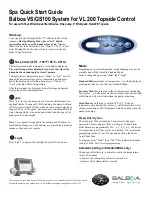
21
Tracking Rate
-
In addition to being able to move the telescope with the hand control buttons, the NexStar will
continually track a celestial object as it moves across the night sky. The tracking rate can be
changed depending on what type of object is being observed:
Sidereal
This rate compensates for the rotation of the earth by moving the
telescope at the same rate as the rotation of the earth, but in the opposite
direction. When tracking in Alt-Az mode, the telescope must make
corrections in both altitude and azimuth.
Lunar
Used for tracking the moon when observing the lunar landscape.
Solar
Used for tracking the Sun when solar observing using a proper solar filter.
View Time-Site
-
View Time-Site
will display the last saved time and longitude/latitude entered in the hand control.
User Defined Objects
- The NexStar can store up to 50 different user defined objects in its memory. The objects can
be daytime land objects or an interesting celestial object that you discover that is not included
in the regular database. There are several ways to save an object to memory depending on
what type of object it is:
Save
Sky Object:
The NexStar stores celestial objects to its database by saving its right ascension and
declination in the sky. This way the same object can be found each time the telescope is
aligned. Once a desired object is centered in the eyepiece, simply scroll to the "
Save Sky
Obj"
command and press ENTER. The display will ask you to enter a number between 1-25
to identify the object. Press ENTER again to save this object to the database.
Save Database (Db)
Object:
This feature allows you to create your own custom tour of database objects by allowing you
to record the current position of the telescope and save the name of the object by selecting it
from any one of the database catalogs. These objects then can be accessed by selecting
GoTo
Sky Object.
Save Land Object
:
The NexStar can also be used as a spotting scope on terrestrial objects. Fixed land objects
can be stored by saving their altitude and azimuth relative to the location of the telescope at
the time of observing. Since these objects are relative to the location of the telescope, they
are only valid for that exact location. To save land objects, once again center the desired
object in the eyepiece. Scroll down to the "
Save Land Obj
" command and press
ENTER. The display will ask you to enter a number between 1-25 to identify the object.
Press ENTER again to save this object to the database.
Enter R.A. - Dec:
You can also store a specific set of coordinates for an object just by entering the R.A. and
declination for that object. Scroll to the "
Enter RA-DEC "
command and press ENTER.
The display will then ask you to enter first the R.A. and then the declination of the desired
object.
GoTo Object:
To go to any of the user defined objects stored in the database, scroll down to either
GoTo
Sky Obj
or
Goto Land Obj
and enter the number of the object you wish to select and
press ENTER. NexStar will automatically retrieve and display the coordinates before
slewing to the object.
To replace the contents of any of the user defined objects, simply save a new object using one of the existing identification
numbers; NexStar will replace the previous user defined object with the current one.
Get RA/DEC
- Displays the right ascension and declination for the current position of the telescope.
Goto R.A/ Dec
- Allows you to input a specific R.A. and declination and slew to it.
















































